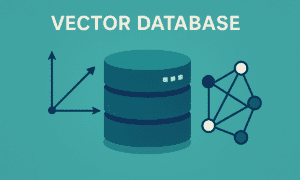In the ever-evolving digital landscape, web development has become an integral part of our lives. Whether you’re a business owner, a budding entrepreneur, or simply someone curious about the world of technology, understanding the basics of web development is essential. This comprehensive guide aims to provide beginners with a solid foundation, demystifying the intricate world of web development.
Understanding the Basics OF Web Development
- What is Web Development?
Web development refers to the process of building and maintaining websites. It encompasses a range of tasks, from creating simple static pages to complex dynamic applications. Web development can be broadly categorized into two main components: front-end and back-end development.
Front-End Development
Front-end development involves creating the visual elements of a website that users interact with. This includes the layout, design, and user interface. Common front-end technologies include HTML, CSS, and JavaScript.
Back-End Development
Back-end development focuses on the server-side of a website, handling the behind-the-scenes functionality. It involves working with databases, server configurations, and server-side scripting languages like PHP, Python, or Node.js.
- Essential Tools for Web Development
Text Editors
Text editors are essential for writing and editing code. Popular choices include Visual Studio Code, Sublime Text, and Atom. These editors offer features like syntax highlighting, auto-completion, and plugin support to enhance productivity.
Version Control Systems
Version control systems, such as Git, allow developers to track changes in their code, collaborate with others, and easily revert to previous versions. Platforms like GitHub and Bitbucket provide hosting for Git repositories
HTML: The Building Blocks of the Web
HTML (Hypertext Markup Language) serves as the foundation for web development, providing the structure for web pages.
- HTML Basics
Tags and Elements
HTML uses tags to define elements on a page. Common tags include <html>, <head>, <body>, <p>, and many more. Understanding how to structure these tags is crucial for creating well-formed HTML documents.
Document Structure
A typical HTML document includes a doctype declaration, head section, and body section. Learning to organize these elements is fundamental to creating clear and readable code.
- HTML5 Features
HTML5 introduces new elements and attributes that enhance the capabilities of web development. These include <header>, <nav>, <article>, <section>, and <canvas>. Embracing HTML5 ensures modern and feature-rich websites.
CSS: Styling Your Web Pages
CSS (Cascading Style Sheets) is used to style and present HTML documents. It allows developers to control the layout, colors, and fonts of a website.
- Selectors and Properties
CSS uses selectors to target HTML elements and apply styles. Understanding properties like color, font-size, margin, and padding is crucial for creating visually appealing web pages.
- Layout and Flexbox
CSS provides various layout techniques, including the traditional box model, and the more modern Flexbox. Learning how to create responsive layouts ensures a seamless user experience across different devices.
JavaScript: Adding Interactivity
JavaScript is a dynamic programming language that adds interactivity and functionality to web pages.
- Basics of JavaScript
Variables and Data Types
JavaScript uses variables to store and manipulate data. Understanding data types, such as strings, numbers, and booleans, is essential for writing effective JavaScript code.
Control Flow and Functions
Control flow statements like if-else conditions and loops allow developers to control the flow of their code. Functions are reusable blocks of code that perform specific tasks.
- DOM Manipulation
The Document Object Model (DOM) is a programming interface for web documents. JavaScript can manipulate the DOM, allowing developers to dynamically update and modify content on a webpage.
Back-End Development: Bringing Sites to Life
Back-end development involves server-side scripting and database management.
- Server-Side Scripting
Server-side scripting languages, such as PHP, Python, and Node.js, handle tasks like processing forms, managing user authentication, and interacting with databases.
- Databases
Databases store and retrieve data for web applications. Common types include MySQL, PostgreSQL, and MongoDB. Learning to interact with databases is crucial for creating dynamic and data-driven websites.
Responsive Design and Cross-Browser Compatibility
Creating a website that looks and functions well on different devices and browsers is essential.
- Responsive Design
Responsive design ensures that a website adapts to various screen sizes, providing a consistent user experience on desktops, tablets, and smartphones.
- Cross-Browser Compatibility
Testing and optimizing a website for different browsers (Chrome, Firefox, Safari, etc.) is necessary to reach a broad audience. Tools like BrowserStack can help developers test their websites across multiple browsers.
Web Development Frameworks
Frameworks provide pre-built code and tools to streamline the development process.
- Front-End Frameworks
Bootstrap
Bootstrap is a popular front-end framework that simplifies the design process with pre-built components and a responsive grid system.
React and Vue.js
React and Vue.js are JavaScript libraries/frameworks that facilitate the creation of dynamic user interfaces. They are widely used for building single-page applications (SPAs).
- Back-End Frameworks
Django
Django is a Python web framework that follows the model-view-controller (MVC) architectural pattern. It is known for its simplicity and scalability.
Express.js
Express.js is a minimal and flexible Node.js web application framework that simplifies building robust web applications.
Web Hosting and Deployment
Once a website is developed, it needs to be hosted on a server and made accessible to the public.
- Hosting Providers
Popular hosting providers include Bluehost, HostGator, and AWS. Choosing the right hosting provider depends on factors like traffic, scalability, and budget.
- Deployment
Deployment involves transferring the website from a local development environment to a live server. Platforms like Heroku, Netlify, and GitHub Pages offer straightforward deployment options.
Continuous Learning and Community Involvement
Web development is a dynamic field, and staying updated is crucial.
- Online Resources
Platforms like MDN Web Docs, W3Schools, and freeCodeCamp offer extensive tutorials and documentation for learning and reference.
- Community Involvement
Joining online communities, such as Stack Overflow, GitHub, and developer forums, allows beginners to seek help, share experiences, and stay informed about industry trends.
Conclusion
This comprehensive guide covers the basics of web development, providing beginners with a roadmap to navigate the vast landscape of technologies and concepts. As you embark on your web development journey, remember that practice, continuous learning, and community engagement are key to mastering the art of building compelling and functional websites. Happy coding!



































